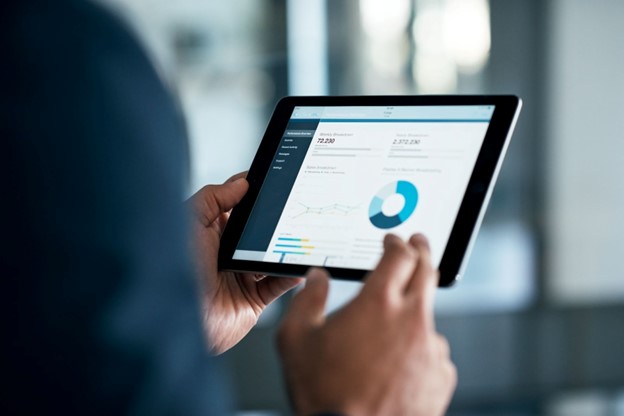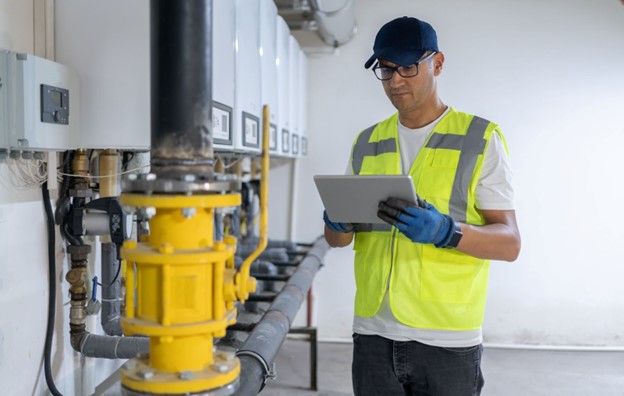
Technology is rapidly shaping every industry—from finance to travel. Facilities management is no exception.
While industry professionals may not always readily adopt technological solutions for facility maintenance, they are quickly becoming a top priority for leading schools. Technology is becoming part of the nation’s top institutions’ daily lives—from automated work order systems to analytics that drive preventive maintenance programs.
Facilities programs leading the charge are uncovering increased efficiencies, enhancing building safety, lowering costs, and bettering sustainability performance. As technology advances, this optimized approach to facility management will become further entrenched in every institution’s plans. In the following column, we will explore a few notable technology trends to help understand how they’re incorporated, the benefits of these solutions, and why they’re shaping schools’ approaches to facility management.
Current Technology Trends in Facilities Management
Burgeoning tech trends continue to mold the education facility landscape. Leading schools are using:
- Automated Work Order Systems: Manual work orders are being replaced by automated systems that streamline the request, approval, and execution process. These systems often feature mobile capabilities, allowing staff to submit work orders from anywhere and improving response times and accountability.
- Predictive Maintenance: Through data analytics and machine learning, schools can predict equipment failures before they occur. By identifying trends in maintenance data, leading facilities managers then can schedule proactive maintenance tasks. These programs reduce downtime and extend the lifespan of critical assets.
- Energy Management Systems: Energy costs continue to rise with added emphasis on sustainability. As a result, facilities leaders feel more pressure to reduce carbon emissions. Energy management systems are gaining traction in education facilities to accomplish these goals.

Images Courtesy of FMX.
These systems monitor energy consumption in real-time, identify inefficiencies, and automate energy-saving measures such as lighting and HVAC control. Schools can significantly reduce utility expenses and minimize their environmental footprint by optimizing energy usage.
- IoT-enabled Smart Building Technologies: Internet of Things (IoT) devices revolutionized building management. They connect various systems and enable building automation systems. Smart sensors monitor environmental conditions, occupancy levels, and equipment performance, allowing facilities managers to make data-driven decisions about temperature control, lighting, door access, etc.
- Cloud-based Facility Management Software: Paper-based processes replace cloud-based solutions that centralize data, streamline communication, and provide real-time visibility into facility operations. These platforms enable seamless stakeholder collaboration, facilitate asset tracking, and support long-term planning initiatives.
- Remote Monitoring: Remote monitoring and management solutions are essential as school facilities become increasingly complex and the emphasis on safety and security grows. These systems enable facilities managers to remotely monitor critical infrastructure, access real-time data, and respond quickly to emergencies, enhancing operational resilience and ensuring the safety of students and staff.
How to Embrace Trending Technologies
These trends are increasingly critical to facilities management. Schools continue to look for ways to incorporate them into their building strategies, and leading institutions are taking advantage of the robust facilities management software market.
While no platform encapsulates every trend, most can be covered by adopting a comprehensive facilities management software solution. These powerful tools can centralize data and streamline operations, ensuring that all information related to maintenance, energy consumption, and asset management is easily accessible.
 By automating workflows, schools can replace manual processes with efficient, mobile-enabled systems that improve response times and accountability. Education facilities can use them to incorporate predictive maintenance programs with advanced analytics that prevent issues before they occur.
By automating workflows, schools can replace manual processes with efficient, mobile-enabled systems that improve response times and accountability. Education facilities can use them to incorporate predictive maintenance programs with advanced analytics that prevent issues before they occur.
Energy management systems built into platforms can monitor real-time energy consumption, identify inefficiencies, and automate energy-saving measures. These aspects of facility management software significantly reduce utility costs and minimize environmental impact.
When managed through a centralized platform, IoT-enabled intelligent building technologies allow for monitoring environmental conditions, occupancy levels, and equipment performance. This data optimizes resource allocation and decision-making.
Why Educational Institutions Embrace Technology
Leading schools are quick to embrace these technological trends because of their benefits. Most offer more than a centralized platform or communication vehicle for facilities professionals. By utilizing an effective facilities management platform, education facilities can expect to uncover:
- Increased Efficiency: According to a report by Formstack and Mantis Research, organizations lose up to $1.3 million a year due to maintenance inefficiency. Maintenance software allows staff to address tasks promptly—preventing costly delays and ensuring that maintenance activities do not disrupt school operations.
- Optimize Staffing Amid Shortages: Since the pandemic’s outset, staffing has been a continuous challenge for education facilities. Through technological applications, leading institutions have found ways to optimize their staff. Technology allows them to do the work they need to get done with labor constraints. These solutions save employees time and correctly prioritize their workloads.
- Sustainability Initiatives: Another compelling reason for adopting these technologies is the push toward sustainability. Energy management systems and other green technologies not only help schools reduce carbon emissions but also result in significant savings on utility expenses. Schools can contribute to environmental conservation by optimizing energy usage while adhering to budget constraints.
- School Safety: Safety and security are paramount in school environments. Remote monitoring and IoT-enabled technologies enhance the ability to maintain safe and secure facilities, providing real-time data and quick response capabilities essential for protecting students and staff.
- Cost Reduction: Predictive analytics and proactive maintenance programs help extend the lifespan of critical assets, reducing the need for frequent replacements and extensive repairs, which can be financially burdensome.
Looking Toward the Future
By integrating these technological solutions, education facilities managers unlock new opportunities for efficiency, cost savings, and sustainability. These advancements create safer, healthier learning environments conducive to education and well-being.
As these trends become more entrenched, adopting comprehensive facilities management software and its technological benefits will continue to be a strategic priority for leading education institutions.
Darin Porter is the executive director of industry practices at FMX in Columbus, Ohio. He can be reached at [email protected]. This is his first article for Facilities Manager.
Technology + Trends
Seeks to identify technology and trends evolving and emerging in educational facilities. To contribute, please contact Craig Park, field editor of this column.
See all Technology + Trends.


